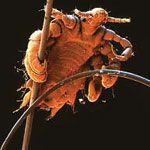
Head lice are itchy little buggers that can spread through a classroom like wildfire, unless you stop them in their tracks.
What are head lice?
Head lice are tiny little wingless insects that live, feed and breed on the human scalp. They’ve been around for thousands of years. Their eggs are known as nits. The itch is caused by the lice biting your scalp to feed on your blood. Head lice are very common, especially among primary school kids. Having lice does not mean that you’re dirty, and they don’t spread disease or cause any damage.
How to do get them?
Head lice are very easy to catch, and are spread by head-to-head contact, which can happen when people play together, hug or work closely side-by-side. Lice can’t fly or jump ” they can only crawl.
How do I know if I have lice?
If you think you might have lice, get someone to have a good look at your scalp or hair. The lice themselves can move very fast, so can be hard to spot. The best way is to look for the nits, especially around your ears, the back of your neck and under fringes. You might also find lice poo on your pillow or collar, which looks like tiny black spots, or notice a gritty feeling when you run your fingers through your hair.
Can they be treated?
Yes! There are treatments available that you can get from your chemist or doctor. If you don’t want to use chemicals, you can try using a lice comb together with a conditioner. A head lice comb has long, rounded stainless steel teeth positioned very close together.
After applying conditioner to dry hair, comb the hair carefully and wipe the comb onto a paper towel. Repeat this every two days until no lice appear on the paper towel after combing.
Can lice be prevented?
You can’t totally prevent lice, however tying long hair back and checking hair regularly with a fine-toothed comb can help to prevent them spreading. Don’t share brushes, hats or helmets.
Comments are closed.